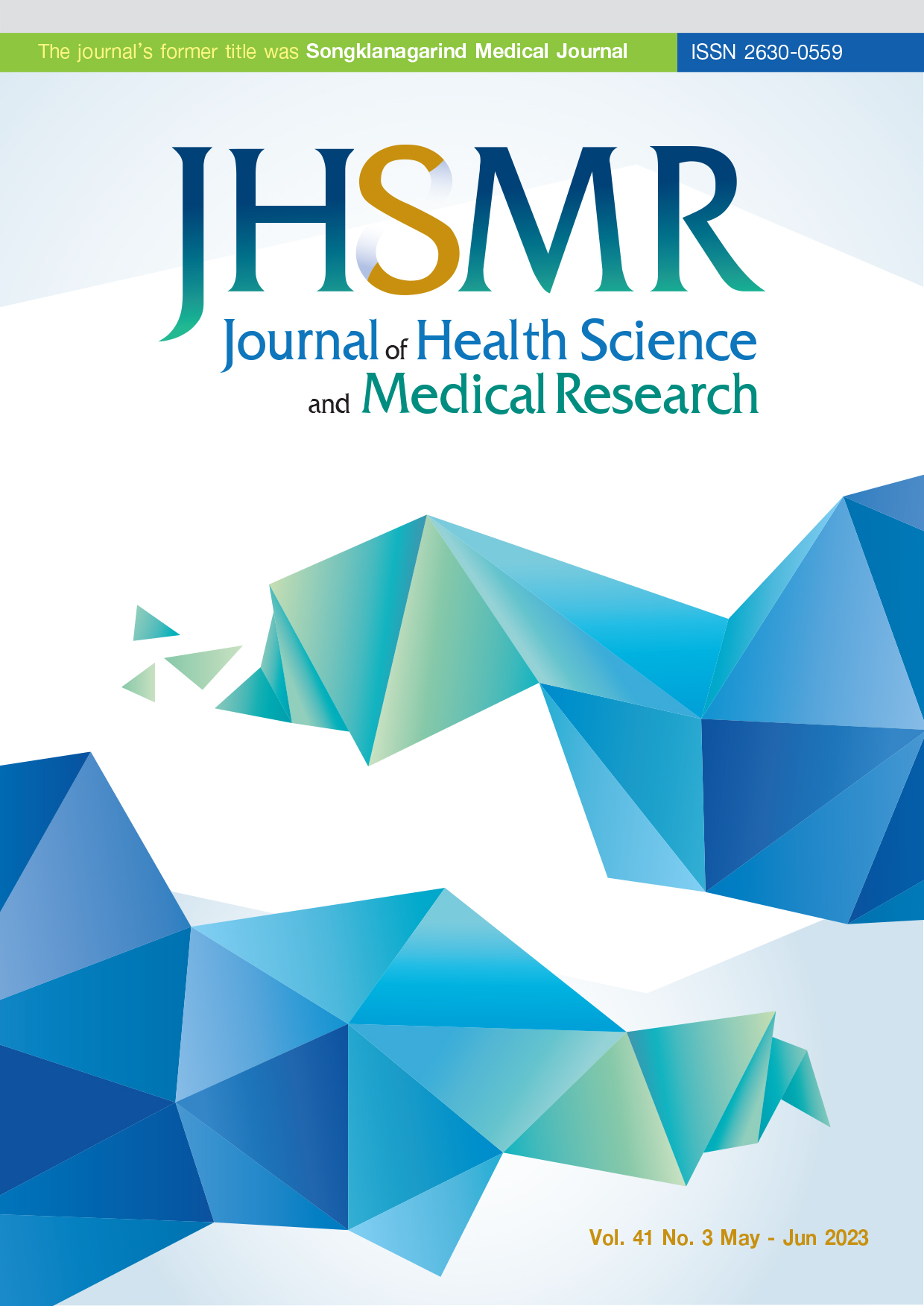Establishment of A Novel Paclitaxel-Resistant Triple-Negative Breast Cancer Cell Line
DOI:
https://doi.org/10.31584/jhsmr.2023917Keywords:
cell line, paclitaxel resistance, TNBC, triple-negative breast cancerAbstract
Objective: Triple-negative breast cancer (TNBC) is one of the most aggressive subtypes of breast cancer, and is associated with poor prognosis. Paclitaxel, a microtubule-binding agent, and chemotherapeutic agent, has been widely used in the management of TNBC. However, acquired chemoresistance is one of the main obstacles leading to ineffective TNBC treatment. Therefore, this study aimed to establish and characterize paclitaxel-resistant triple-negative breast cancer cell lines for investigating the molecular mechanisms of drug resistance.
Material and Methods: Hs578T cancer cell lines were used to develop paclitaxel-resistant (Hs578T-PR) cells, via repeated exposure to increasing concentrations of paclitaxel in a stepwise manner. Drug response and growth curves were then measured by Sulforhodamine B assay. Changes in cell morphology were examined by microscopy. Furthermore, expression of mRNA, related to molecular mechanisms in drug-resistant cells, was identified by using real-time polymerase chain reaction (qPCR).
Results: The Hs578T-PR cell lines were successfully established in just 4 months. They were highly resistant to paclitaxel, with their IC50 and resistance index at 72.8±3.08 nM and 7.4-folds, respectively, compared to the parental cells. For identifying molecular mechanisms underlining paclitaxel resistance, using the RT-qPCR analysis, it was found that Hs578T-PR cells exhibited kinesin family member 3C overexpression. Furthermore, the pro-apoptotic protein BAX was down-regulated; whereas the anti-apoptotic Bcl-2 was up-regulated in Hs578T-PR cells.
Conclusion: Novel, highly paclitaxel-resistant (Hs578T-PR) cell lines established in this study could represent a useful model for identifying the molecular mechanisms of chemoresistance, and for evaluating the efficacy of novel anti-cancer drugs to overcome chemoresistance in TNBC.
References
Bray F, Ferlay J, Soerjomataram I, Siegel RL, Torre LA, Jemal A. Global cancer statistics 2018: GLOBOCAN estimates of incidence and mortality worldwide for 36 cancers in 185 countries. CA Cancer J Clin 2018;68:394–424.
Bray F, Ferlay J, Soerjomataram I, Siegel RL, Torre LA, Jemal A. Global cancer statistics 2018: GLOBOCAN estimates of incidence and mortality worldwide for 36 cancers in 185 countries. CA Cancer J Clin 2018;68:394–424.
Mansoori B, Mohammadi A, Davudian S, Shirjang S, Baradaran B. The different mechanisms of cancer drug resistance: A brief review. Adv Pharm Bull 2017;7:339-48.
Housman G, Byler S, Heerboth S, Lapinska K, Longacre M, Snyder N, et al. Drug resistance in cancer: an overview. Cancers (Basel) 2014;6:1769-92.
LeBeau AM, Sevillano N, King ML, Duriseti S, Murphy ST, Craik CS, et al. Imaging the urokinase plasminongen activator receptor in preclinical breast cancer models of acquired drug resistance. Theranostics 2014;4:267–79.
Takahashi K, Tanaka M, Inagaki A, Wanibuchi H, Izumi Y, Miura K, et al. Establishment of a 5-fluorouracil-resistant triple negative breast cancer cell line. Int J Oncol 2013;43:1985–91.
Li Z, Tian T, Hu X, Zhang X, Nan F, Chang Y, et al. Six1 mediates resistance to paclitaxel in breast cancer cells. Biochem Biophys Res Commun 2013;441:538–43.
Lai TC, Fang CY, Jan YH, Hsieh HL, Yang YF, Liu CY, et al. Kinase shRNA screening reveals that TAOK3 enhances microtubule-targeted drug resistance of breast cancer cells via the NF-κB signaling pathway. Cell Commun Signal 2020;18:164.
Chen M, Vijay V, Shi Q, Liu Z, Fang H, Tong W. FDA-approved drug labeling for the study of drug-induced liver injury. Drug Discov Today 2011;16:697-703.
Tan MH, De S, Bebek G, Orloff MS, Wesolowski R, Downs Kelly E, et al. Specific kinesin expression profiles associated with taxane resistance in basal-like breast cancer. Breast Cancer Res Treat 2012;131:849–58.
De S, Cipriano R, Jackson MW, Stark GR. Overexpression of kinesins mediates docetaxel resistance in breast cancer cells. Cancer Res 2009;69:8035–42.
Sharifi S, Barar J, Hejazi MS, Samadi N. Roles of the Bcl-2/ Bax ratio, caspase-8 and 9 in resistance of breast cancer cells to paclitaxel. Asian Pac J Cancer Prev 2014;15:8617–22.
Downloads
Published
How to Cite
Issue
Section
License

This work is licensed under a Creative Commons Attribution-NonCommercial-NoDerivatives 4.0 International License.
























